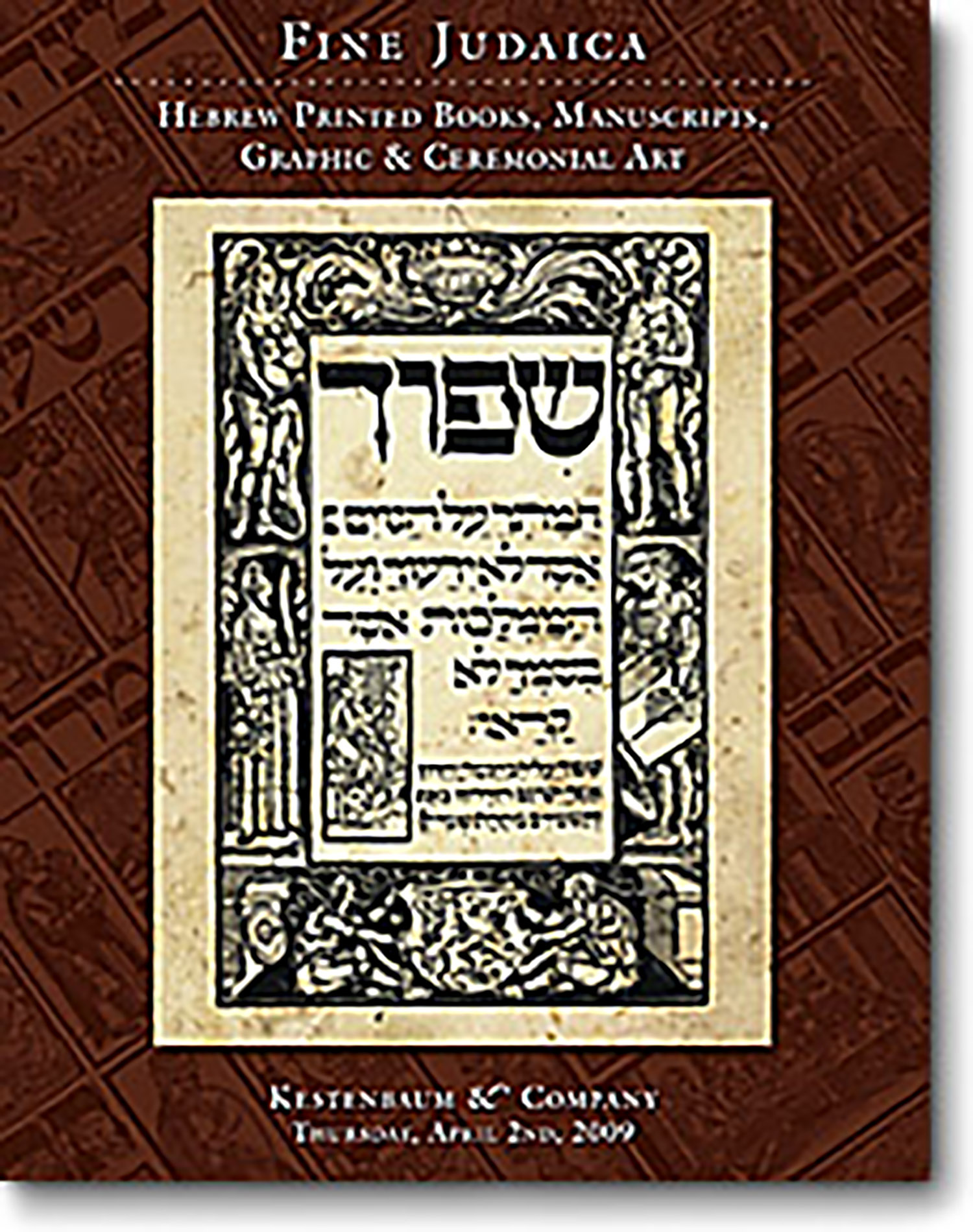Megilah Scroll: "Purim of Saragossa."

AUCTION 43 |
Thursday, April 02nd,
2009 at 1:00
Fine Judaica: Hebrew Printed Books, Manuscripts, Graphic & Ceremonial Art
Lot 274
(ITALY)
Megilah Scroll: "Purim of Saragossa."
Ottoman Empire: 16th Shevat 1865
Est: $1,500 - $2,000
PRICE REALIZED $1,800
Alongside the Purim ascribed via the Biblical Book of Esther, many individual communities commemorated local "Purims" to mark local histories that resulted in escape from particular danger. Thus, through the ages there developed "Second Purims" in Granada, Spain; Narbonne, Provence; Morocco and Egypt, etc. Perhaps the most celebrated of these Second Purims is the Purim of Saragossa, which merited a megilah of its own.
It was the custom of the 14th-century Jewish community of Saragossa to greet the ruling king on his annual visit to the city with a procession of Torah scrolls. One year, the sages of the community decided that rather than subject the sanctity of the Torah scrolls to the elements, they would greet the king with the hollow Torah cases only. A pernicious Jewish convert to Christianity named Marcus revealed this supposed dishonor to the king, whereupon the ruler resolved to have the cases opened on the next similar occasion. Fortunately, the Prophet Elijah appeared to the beadle of the synagogue and instructed him to take urgent measures and return the Torah scrolls to their cases. Accordingly, upon the next royal procession, the kings' guards opened the cases which indeed revealed that no deception had been practiced by the Jews. The anger of the king fell upon Marcus, who was promptly executed. In commemoration of this miracle the descendants of the Jews of Saragossa celebrate this Second Purim on the 17th of Shevat in the synagogues founded by their ancestors at Constantinople, Magnesia, Melasso, Smyrna, Aden, Jerusalem and Salonica. This particular scroll, recounting the story, dates to 1865.
According to Prof. Yerushalmi, some confusion has crept into the matter. The Jewish community whose miraculous deliverance is celebrated, is not that of Saragossa, Spain but rather that of Syracuse, Sicily. Furthermore, as to the date, that according to Yerushalmi the events described in the Megilah occurred was either in 1380 or in 1420. See Y.H. Yerushalmi, Zakhor: Jewish History and Jewish Memory (1982), p. 47; D. Simonsen, "Le Pourim de Saragosse est un Pourim de Syracuse," REJ, 59 (1910), pp. 90-95; EJ, Vol. XIV, col. 863; JE, Vol. X, p. 282; Vol. XI, p. 53
